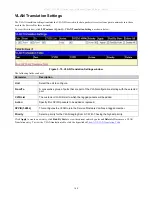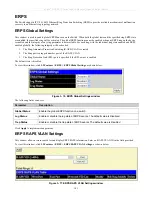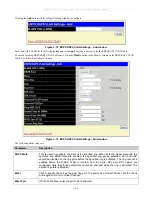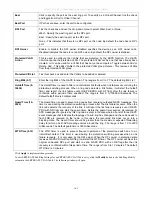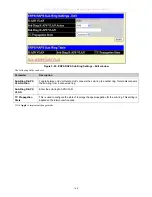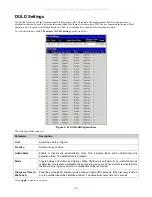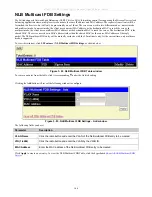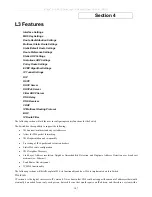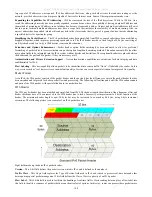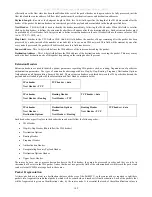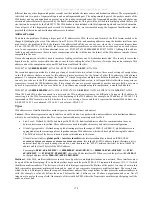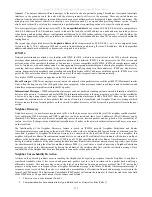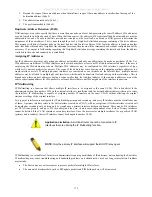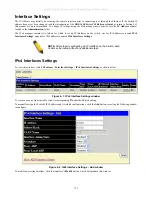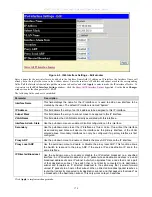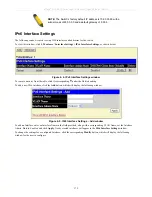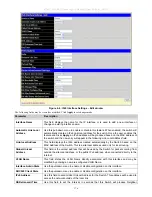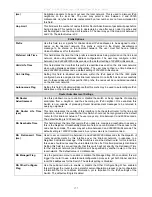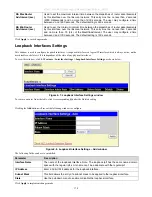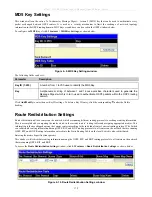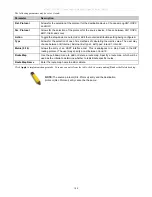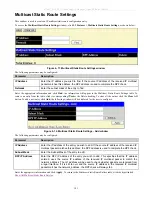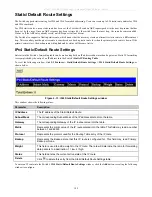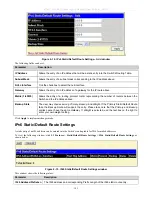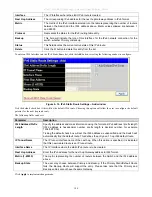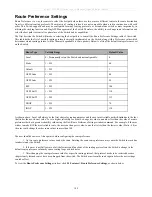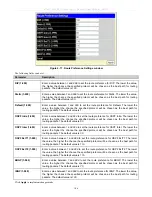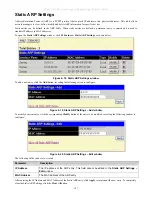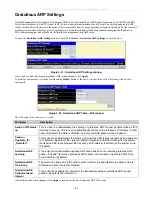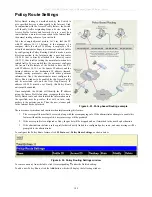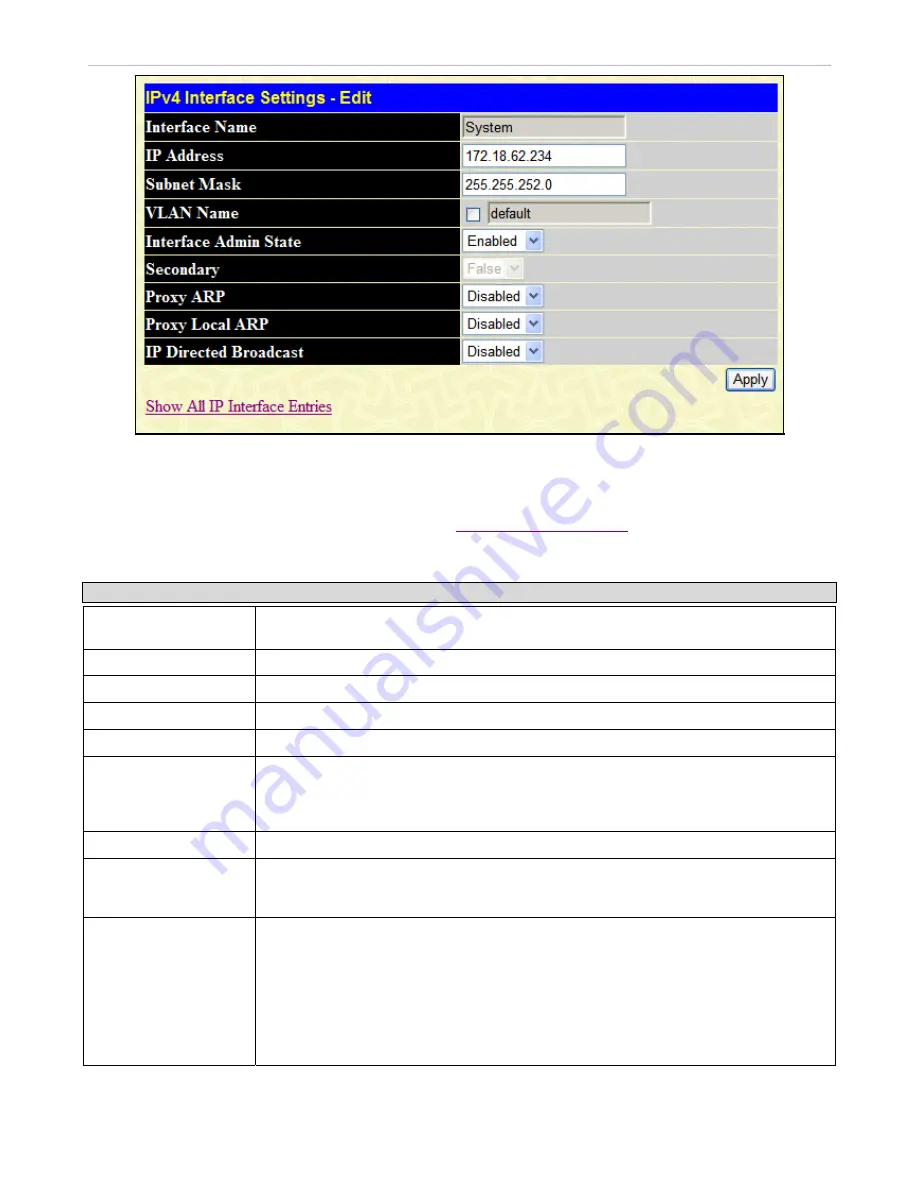
xStack
®
DGS-3600 Series Layer 3 Managed Gigabit Ethernet Switch
Figure 4- 3. IPv4 Interface Settings – Edit window
Enter a name for the new interface to be added in the Interface Name field (if editing an IP interface, the Interface Name will
already be in the top field as seen in the window above). Enter the interface’s IP address and subnet mask in the corresponding
fields. Pull the Interface Admin State
pull-down menu to
Enabled
and
click
Apply
to enter to make the IP interface effective. To
view entries in the
IPv4 Interface Settings
window, click the
Show All IP Interface Entries
hyperlink. Use the
Save Changes
window to enter the changes into NV-RAM.
The following fields can be set or modified:
Parameter Description
Interface Name
This field displays the name for the IP interface or is used to add a new interface to be
created by the user. The default IP interface is named “System”.
IP Address
This field allows the entry of an IPv4 address to be assigned to this IP interface.
Subnet Mask
This field allows the entry of a subnet mask to be applied to this IP interface.
VLAN Name
This field states the VLAN Name directly associated with this interface.
Interface Admin. State
Use the pull-down menu to enable or disable configuration on this interface.
Secondary
Use the pull-down menu to set the IP interface as
True
or
False
.
True
will set the interface
as secondary and
False
will denote the interface as the primary interface of the VLAN
entered above.
Secondary
interfaces can only be configured if a
primary
interface is first
configured.
Proxy ARP
Use the pull-down menu to
Enable
or
Disable
the proxy ARP state on the IP interface.
Proxy Local ARP
Use the pull-down menu to
Enable
or
Disable
the proxy local ARP. This function allows
the Switch to respond to the proxy ARP, if the source IP and destination IP are in the
same interface.
IP Directed Broadcast
Use the pull-down menu to enable or disable the IP directed broadcast on a specified
interface. An IP directed broadcast is an IP packet whose destination address is a valid
broadcast address of some IP subnet, but which originates from a node that is not a part
of that destination subnet. The switch that is not directly connected to its destination
subnet and forwards an IP directed broadcast in the same way that it would forward
unicast IP packets to a host on that subnet. When a directed broadcast packet reaches a
router that is directly connected to its destination subnet, and that packet is "exploded" as
a broadcast on the destination subnet. This only works on layer 3 switches.
Click
Apply
to implement changes made.
174

